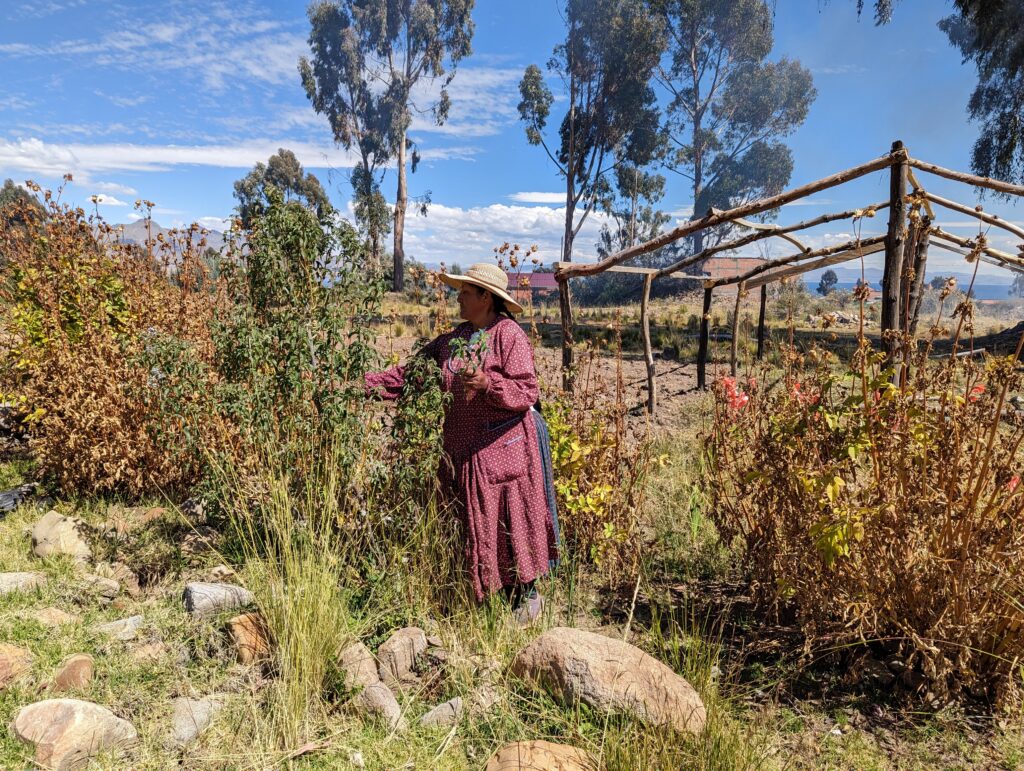Two Berkeley professors receive prestigious Guggenheim fellowships
Philosopher Hannah Ginsborg will use the award to write a book about the relation between norms and reasons, while chemical engineer Markita del Carpio Landry will try to find molecules in little-studied plants that could treat neurological disorders.

Neil Freese/UC Berkeley (Source: Hagit Caspi/UC Berkeley; Vilcek Foundation)
April 22, 2025
For the past 100 years, the Guggenheim Foundation has bestowed one of the highest intellectual honors on North American academics and creatives: the Guggenheim Fellowship. Zora Neale Hurston penned Their Eyes Were Watching God during her time as a fellow; James Baldwin and UC Berkeley’s Jennifer Doudna are also alumni. This year, two additional Berkeley professors, philosopher Hannah Ginsborg and chemical engineer Markita del Carpio Landry, will join the ranks.
The fellowship, which named 198 new awardees last week, allows recipients to pursue ambitious projects under “the freest possible conditions” according to the Guggenheim Foundation. Del Carpio Landry, a Berkeley associate professor of chemical and biomolecular engineering, as well as of neuroscience, said this freedom is crucial: “It allows me to pursue bold and unconventional ideas that are failure-prone but could generate significant impact if successful.”
Del Carpio Landry’s lab focuses on manipulating particles that are less than one-millionth of a centimeter large. Her team publishes a slew of papers each year, but in general, its work centers around two scientific problems. The first is helping scientists track neurochemical signaling in the brain — in other words, the way that neurons communicate. Monitoring these chemical messengers could help scientists better understand psychiatric and neurodegenerative conditions, such as Huntington’s, Parkinson’s and depression. Del Carpio Landry has also investigated how to deliver outside components, including tools for genetic modifications, to plant cells. In 2023, this research won her the Bakar Prize for its potential to help create climate-resilient crops.
With the Guggenheim, she plans to combine these fields of inquiry for the first time and research how compounds extracted from plants used in Indigenous Bolivian medicine might have potential as treatments for nervous system disorders.
“When it comes to traditional medicinal remedies, countries with the most knowledge often lack scientific resources, and countries with resources lack specific knowledge,” del Carpio Landry said. “I find this is the case with my home country of Bolivia and the rich sources of medical plants that have been cultivated in the Andes, but never before been studied.”
With support of the W. M. Keck Foundation, she has already traveled to Bolivia’s high plateau to collect plant samples, working alongside local Indigenous communities. One species, she recently found, contained so many therapeutic molecules that it overwhelmed the tool the lab was using to analyze it. Her team will use the imaging techniques it’s developed over the years to see how the molecules it isolates from these Andean plants affect brain chemistry.

Courtesy of the Landry Lab
Ginsborg, a professor of philosophy who joined Berkeley’s faculty in 1988, is the campus’s other newly minted Guggenheim Fellow. Ginsborg’s work builds on that of Enlightenment philosopher Immanuel Kant. In her scholarship, she considers how Kant’s findings around judgment and cognition apply today, including how we perceive and form beliefs about the world around us as well as our relationship with rules and norms.
With her Guggenheim fellowship, which was underwritten by the Hocking-Cabot Fund for Systematic Philosophy, Ginsborg will take time away from teaching and administration to concentrate on writing a book, Normativity Without Reasons. In it, she’ll elaborate on her theory that the notion of normativity is more primitive than that of rationality. For example, very young children understand the world in terms of norms before they can even grasp the reasons that an adult might cite to explain those rules or expectations. Ginsborg maintains that this concept, which she calls “primitive normativity,” is more basic than a sense of moral right or wrong or social appropriateness; it develops before those understandings.
One example she’ll dive into focuses on how toddlers sort objects. When presented with a group of two different types of toys, like miniature boats and dolls, children will group objects that are alike and protest if a group of unsorted items is presented to them. This behavior, she said, shows that a sense of normativity plays a part in concept acquisition and language learning from a very young age.
While Normativity Without Reasons will be aimed primarily at an audience of fellow philosophers, Ginsborg said the topics it addresses have broader implications. “How a child learns her first language can be very illuminating in understanding the nature of human language, thinking and the capacity to reason,” she said. “It can help illuminate how deep the difference is between what humans do when they learn, think and write and what large language models do when they produce imitations of human thought and writing.”
Robert Sanders contributed to this report.